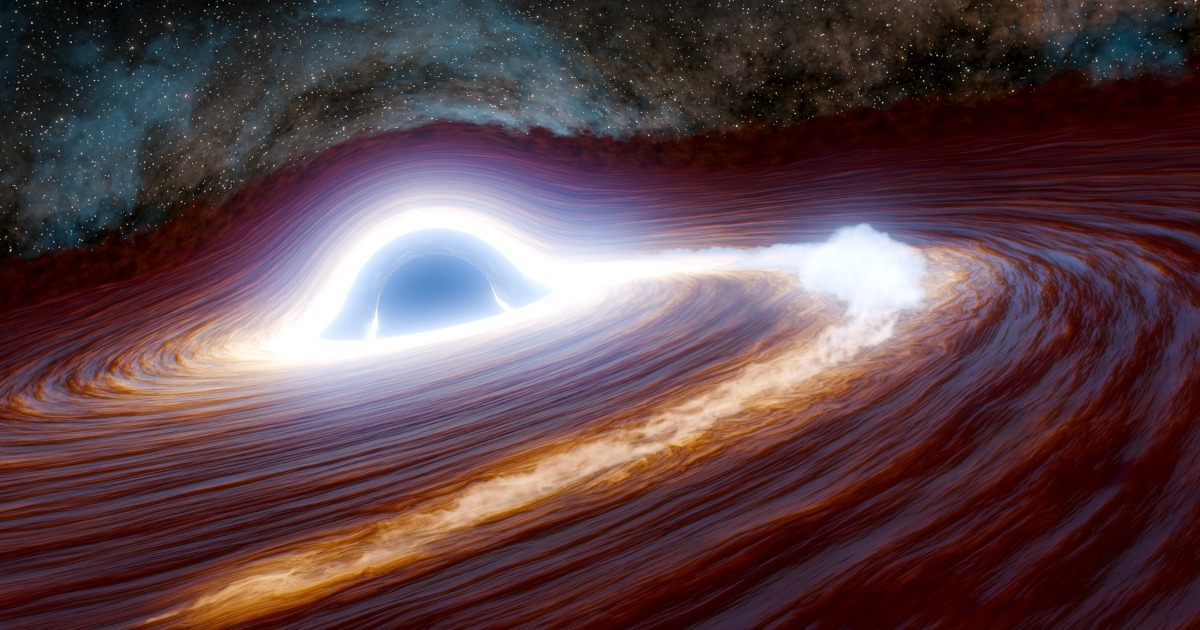A supermassive black hole violently gobbled up an enormous star, producing a gargantuan cosmic outburst, according to a new study.
A supermassive black hole violently gobbled up an enormous star, producing a gargantuan cosmic outburst, according to a new study.
The black hole flare, as the phenomenon is known, is thought to be the biggest and most distant ever recorded — it was detected from 10 billion light-years away.
“This is really a one-in-a-million object,” said Matthew Graham, a research professor of astronomy at the California Institute of Technology and the lead author of the study, which was published Tuesday in the journal Nature Astronomy.
Thats roughly 50 Milkyways. How?!?! Damn, nature! You scary.
If something like that happened with our black hole, how long would it take to be visible to us, and how cool would it be?
The supermassive black hole at the center of our galaxy is called Sagittarius a. It’s about 26000 light years away, so if an event like that happened it would take 26000 years for us to notice. (But who’s to say that an event like that didn’t happen 25999 years ago? Perhaps we’ll see it tomorrow.)
I honestly have no idea where it would fall on the coolness scale. Somewhere between “an astronomer noticed an abnormally bright star” and “my God… so this is how it ends…” So… somewhere between “meh” and “shit”?
We probably wouldn’t see it before we were autoclaved off the planet. The burst of neutrinos will be the first indicator and then a few seconds later we’ll be annihilated by the gamma rays. So even if someone is sitting at a detector watching they will probably get “oh damn” out before everything ends.
Haha, “autoclaved off the planet”. There’s an amazing expression.
😃
But don’t the beams usually get shot out through the north and South poles of the black hole? Far from where we are, on the outer part of one of the arms?
Sag A* doesn’t point north south in the galactic plane. It’s more like a light house sweeping around with its north and south aligned 50 or 60° off the galactic plane.
This is probably due to collisions in the past with other super massive black holes knocking it off alignment with the galaxy.
Oh shit, yeah that wouldn’t be good at all then. Like a galactic deli slicer. Time to take some X, listen to edm and get the glow sticks out.
And how large a volume did that just sterilize of all potential life?
The universe was only 3 billion years old at the time, and that time period is very anti-life for the universe.
I wonder if any highly intelligent life has experienced a rogue black hole taking out their planet directly getting sucked up, or indirectly with a stirring tour through their star system changing all the orbits enough to kill them.
This is the thing of my nightmares. The movie Don’t Look Up was a cautionary tale of what we can expect if anything that destructive is ever discovered.
Yes, AMA.
deleted by creator







